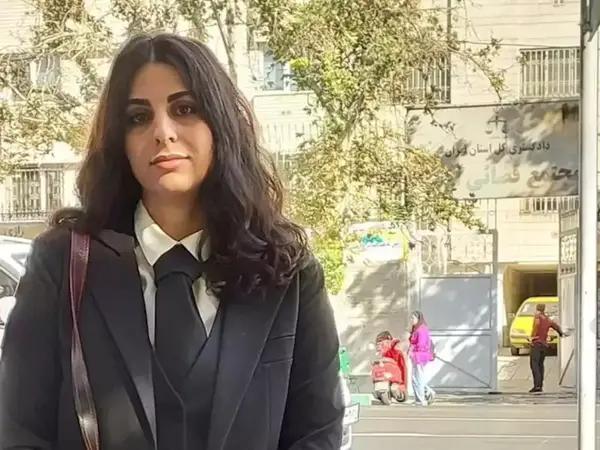Anti-hijab ex-detainee Sepideh Rashno was denied presence at her own trial in Tehran after announcing on social media that she would not wear the hijab at the court.
In a brief statement, the judiciary said Rashno’s trial was held Monday morning. The statement published by the judiciary’s news agency, said Rashno was “absent” at the trial, so her defense was presented by her attorney. The Revolutionary Guards (IRGC) linked Fars news agency said Rashno has not made any comments about being refused presence at her own trial yet.
The artist, writer and editor who will turn 29 in a couple of weeks published a photo of herself with her hair uncovered on Instagram before attending the court Monday morning and said she was going to show up at the court to defend herself against the charges wearing the same clothing.
“[I will attend the trial] to defend myself for crimes that I have not committed, to defend the right to choose one’s clothing and [the right] to write about the things that have happened to me, to defend the right to be a woman, …,” Rashno said in her post.
“I know my family will lose their peace and come under various pressures from all sides but I know that the picture that you see is the truth and have no other choice than being committed to the truth,” she added.
Rashno was arrested on July 16, 2022, after a video of her quarrel with a woman verbally assaulting her for being unveiled on public transport went viral. She was later tortured into televised denunciation of her own actions and expressing regret for the quarrel. Even in the “confession” video her face was bruised showing signs of torture. She was released from Tehran’s Evin prison after about 40 days with a bail of about $27,000, a huge sum for ordinary Iranians.
The young activist was found guilty of “association and collusion with the intention of committing a crime against the country's security" and “propaganda against the Islamic Republic” and given a five-year suspended jail sentence in December but was charged again with “promoting moral corruption” and “propaganda against the regime” after posting an unveiled photo on social media.
She was also suspended for two terms by her university. "As a citizen, I have the right to choose the clothes I wear,” she wrote in response to the decision, adding that she plans to return to the university after her suspension with “her preferred outfit.”
A little over a year later, and after months of nationwide protests following the death of Mahsa Amini in the custody of the morality police, many more women of all ages have found the courage to publicly defy the compulsory hijab rules to the point that in many places being veiled looks stranger than being unveiled, people in Iran say.
Since the beginning of the new academic year last week, authorities have taken tougher measures to enforce the hijab rules in some universities including the use of facial recognition software. Students’ reports on social media indicate continued defiance despite the pressures and threats.
Stricter measures to enforce the hijab are being employed in other public arenas too including denying unveiled women entry to public transport. On Sunday a sixteen-year-old woman in Tehran lost consciousness when her head hit a pole following a dispute over her hijab with hijab enforcers who shoved her against a pole.
Shargh daily has reported that Maryam Lotfi, one of its reporters who followed the victim to the hospital to report the incident, has been arrested.
